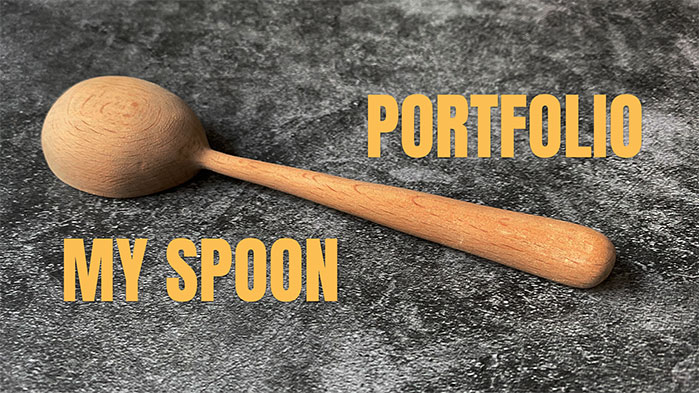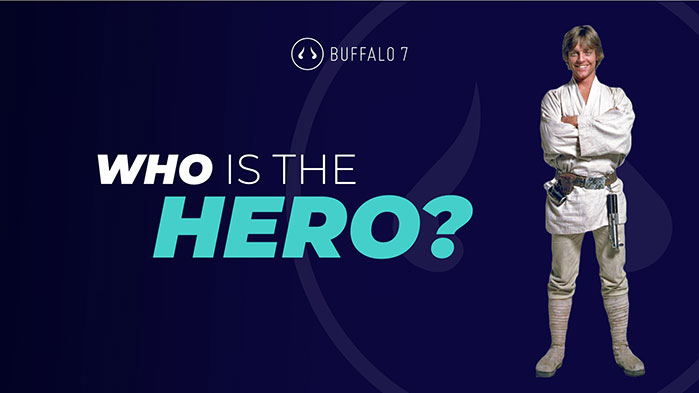There’s not a lot scarier in this world than a blank page. Except a blank page and no brief. Knowing what you should do your presentation on, without any rules or guidelines, is like trying to determine the length of a hypothetical piece of string. Don’t worry, we’re coming in to tighten these reins and add some structure to your thought process.
In our blog, we talk a lot about presentations having purpose. Presentations are catalyst for change, they’re a way to spread big ideas and get your message out into the world. Whether the change you want to see is world changing, life changing, or company changing, knowing your purpose before you begin is the best advice we can give you.
In nine out of ten situations, you’ll know your purpose before you even know you’re going to need a presentation. This is the ‘why’ segment of Simon Sinek’s Golden Circle. It’s about understanding why it is you do what you do. Only then can you guide your business successfully towards a unified goal. By starting with why, Sinek explains that you give your customers something to connect to: a greater, shared ideal.

By the time you come to create your presentation, you can direct all your messaging to reflect your why. This makes forming emotional connections, and inspiring lasting loyalty, a lot easier.
The curveball
But what if you’re not pitching your product to a potential investor? Or your presentation has nothing to do with why you do what you do for a living? What if you’ve just been asked to speak at an event, but the theme isn’t related to your primary professional purpose?
This is a rare occurrence, but it’s been known to happen in job interviews, university assessments, and themed conferences. It’s even been known to happen, regularly, within the Buffalo 7 studio. The entire brief, from start to finish, is: present something.
Our designers and developers, when in the midst of a project with a particularly strict set of guidelines, cry out for an open brief. But, be careful what you wish for. As humans, we like patterns, and guidelines, and rules. Open briefs are scary. How can you know what your performance will be measured on, if the criteria isn’t laid out in advance? How can you possibly narrow down all the topics in the world? How can you be sure you’ve landed on the one that will blow your audience away? We’re about to tell you.
Get to know your audience
We’ve said it before, and we’ll say it again: this isn’t about you. The first rule of presentation writing doesn’t change just because the world becomes your oyster. Your audience still has to live in this mollusc-enriched world, and you still need to speak to them, as individuals.
Get to know who’s going to be sat across from you. Ask questions about their likes, their dislikes, what they dream of, and what’s stopping them from getting there. This will start to narrow down the topics that are going to give you that all-important audience connection.
If you don’t have the opportunity to ask questions, at least find out their job titles. This way, you can do your own research into the general challenges of that role. If you’re presenting to the Head of Marketing, they want to know how to stand out in a crowded industry. Or what the next big tech development will be, that can automate their never-ending job list. Find out everything you can, so that you can tailor your presentation to the people who will be listening.
Think about what your audience probably already knows, and what you want them to know by the end. They invited you to speak for a reason: because you can teach them something. Whatever that something is, don’t disappoint. Make sure every key message is valuable to your audience.
Do your presentation on something you’re passionate about
An open brief is exciting because you can talk about something you’re really interested in. Speak about something that’s personal to you, just find a way to make it relevant to your audience.
This is something we Buffs know all about. Every other Wednesday, we have a company meeting called Show Us Your Buff Stuff. Each fortnight, a different Buffalo shares something they’re passionate about. That’s the entire brief.
So far, we’ve had a presentation covering the finer details of spoon whittling, a two-part history of the disruptive force that is Rockstar Games, a thought-provoking conversational session that opened up the question: “does gender in language affect our perception of the world?”, and a music-packed look at lyricism in rap.

Of course, as presentation experts, we like to flex our presenting muscles as often as possible. But this meeting is about more than that. We get to know each other better, gaining a direct line into people’s hobbies and interests outside of Buffalo 7. We learn about topics we may never even have thought about, expanding our horizons. And we get closer as a team.
If you’re passionate about something, that passion will carry through your voice, body language, and behaviour. Once it’s out in the open, it’ll infect your audience. Audiences respect authenticity, and there’s no easier way to be genuine than to speak from the heart.
Don’t choose your presentation topic alone
When choosing what you should do your presentation on, don’t go it alone. Even though the final presentation may be an individual effort, the planning stage can be a team game. Run some ideas by a close friend, or colleague, and see how they react. They may help you flesh out the ideas you do have, or even offer some better ones.
At Buffalo 7, we work in squads made up of experts from each department. Everyone has their own knowledge base, strengths, and weaknesses, and we understand that we’re stronger together. By brainstorming ideas at the start of the project, everyone understands, and agrees with, the end goal. Even if that objective develops as the milestones pass, we adapt as a team. This all means our ideas, and our final products, are better as a result.
Remember, your presentation isn’t about you. It’s better to find out your topic isn’t relevant to your audience, before you get to that final presentation.
What’s going to make the best story?
Great presenters tell stories. You want to do your presentation on a topic that inspires your audience to adopt your ideas. Storytelling is a powerful way to do this, because we take our audience on a journey. They get swept up in the tale we’re telling, and it’s impossible not to be persuaded by the end.

When you build a presentation story, position your audience as the hero in the adventure. They’re the ones who have to overcome challenges in order to find success. It’s your job to show them how your ideas can guide them to a better way. Of course, you can turn any topic into a story, with the right narrative structure, but it’s emotion that’s the secret weapon here. Will your chosen topic evoke an emotional response from your audience? If not, you might want to have another think.
Bring it all together
Regardless of how open the brief is, your presentation is still trying to change your audience’s minds, beliefs, or actions. No one speaks to a crowd without an end goal in mind. Whether it’s landing your dream job, getting your degree, or changing the views of everyone at a conference, you need to craft your story with a strong focus.
Whatever topic you choose to do your presentation on, make sure your key messages all point towards the inevitable conclusion. Leave your audience with no doubt as to what they need to do next.
Starting with storytelling is key for every presentation. You wouldn’t illustrate a book before it’s written, so don’t start building slides before your story is watertight. However, with an open brief, you need to take just one more step backwards and start from a completely blank page. Don’t let this freedom overwhelm you. Just follow our loose guidance, inject your own passion and personality, and you’ll have a persuasive presentation in no time.


